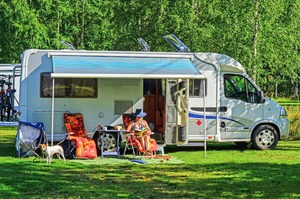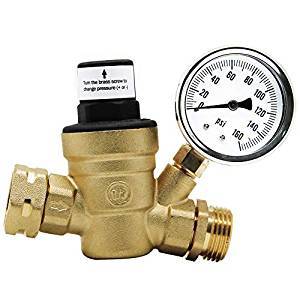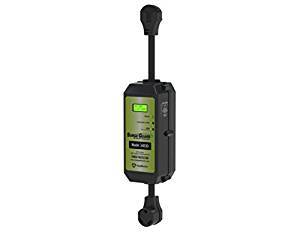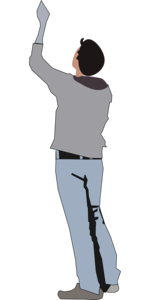We all want our RV adventures to be safe and fun. Unfortunately, there ares some gotchas that can quickly spoil an otherwise great trip. Here are some tips to avoid a few of the more unpleasant ones.
I posted this article a while ago but it went missing somehow. I hope you find it helpful.
Avoid the Black Water Dance
Every new RVer soon hears the standard advice about dumping the holding tanks. Keep the grey water valve closed for a while before you dump to make sure there is water in that tank. When you are ready to dump, drain the black water tank first then close the black water valve and open the grey water so that non-sewer water flushes the hose.
If you have been RVing for any length of time you know that sometimes, when you open that black tank valve, you are suddenly faced with a flood that has you hopping around to avoid the yuck while you try to get to the valve to slam it shut again.
Sewer hoses develop leaks, sometimes you don’t connect the hose securely and sometimes it pops out of the drain to flop around. However it happens, you are faced with an unpleasant mess and a big clean up job. By the way, when this happens to you DO clean up the spill. Don’t be that jerk who drives off and leaves their sewage for the next camper to deal with. While you might not be able to avoid every single black water spill, the first of RV tips offers a way to prevent most of them.
Instead of Black then Grey, Think Grey – Black – Grey
As usual, make sure there is a good amount of water in both tanks. If they are less that half full. I will add water to bring them up to that level or higher.
Now hook up your good quality sewer hose – cheap ones will fail quickly. Double check the connection and look the hose over for cuts or other leaks. Make a firm connection at the sewer end. If the pipe is threaded make sure your hose is screwed in. If you need a rubber donut push it tight.
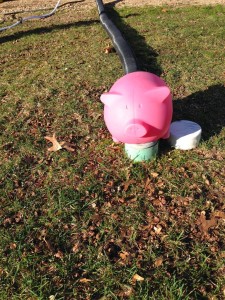
In any case, and especially if the hose end just slips into the drain, put a weight on the end so the hose wont pop out. Often the campground or dump station will provide a rock or brick for that purpose but you should carry your own weight just in case. Sandbags work well or you can get a special hold down accessory like the Sewie Pig.
Now you are ready to dump and here is where my advice will vary from the stock dumping how to. DON”T OPEN THE BLACK WATER VALVE YET. Open the grey water first and let enough water run through to fill the hose and start running down the drain. As the water runs out watch for any sign of leaking. Then, shut the grey water valve.
If everything is draining properly and staying dry, open the black water valve and let the tank drain. Do any back flushing or wanding. When you are satisfied that the tank is empty and clean, close the black water valve and check to make sure it is closed tightly.
Open the grey water valve again, drain that tank fully and close the valve tightly. Finally, flush you hose if water is available and stow it securely.
Your done and there was no drama!
Monitor Back Flush
Here is one more tip about dumping your holding tanks.
Black tank back flush systems are readily available as factory installed or after market add-ons. They are a great addition and I wouldn’t be without one. Just remember, that water running into your holding tank can back up into your toilet( if the flush valve is open) or, if the flush valve is closed, even back up into the vent stack and spray out over you RV roof!
Whenever you are using the back flush with the drain valve closed, keep a close watch on the tank level and never walk away to do something else while the tank fills. Sewer water spraying on your roof and running down the sides of your RV will spoil your whole day!
Turn Off the Water
Whenever you leave your campsite for an extended time, turn off the fresh water at the source. A leak inside your RV or even in your fresh water hose can become a major flood when all that water pressure is trying to get out. You don’t want to spend an afternoon sightseeing then come home to a soggy camper or swampy camp site. Take the 30 seconds to shut the water off before you go.
Also, use a pressure regulator when you hook up to park water. That will make sure your not causing leaks by allowing more pressure in the system than it was designed to handle.
Roll Up the Awning
One other thing to do before you leave your RV and even before going to bed at night is to roll up your awning. If you have every seen an awning rip the brackets off an RV wall and flap against the side and top of the vehicle, you know how destructive a loose awning can be. If you haven’t seen it don’t let your own awning be your first experience. Roll it up or, at the very least, anchor it properly.
Use a Surge Protector
This is a true story that happened to us. I decided that a surge protector would be a good investment for a new travel trailer we bought a few years ago. The night before our first trip in it, I went to Camping World and bought a portable unit.
The next day we drove to a campground we had visited many times before and backed into our assigned spot. After leveling the trailer, I pulled out my new surge protector and plugged it into the 30 amp outlet then plugged the trailer’s power cord into the protector.
Right away a red light came on and a reverse polarity message displayed on the screen. I unplugged the trailer and called the park office for help. They sent one of the employees down with a meter and confirmed the problem. We moved to a different site (with safe power) and enjoyed our weekend.
So, now I am a believer. I wont hook up to a power pedestal without a surge protector and you shouldn’t either. Get one that is the right size for your RV.
Check Your Tires
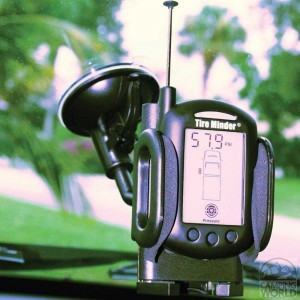
Always, always check your tire pressure and inspect your tires before you move your RV. A flat tire on a motor home or trailer is not like one on your car. If it is a motor home dual or on a trailer you might not even know it happened until you have completely destroyed the tire and, probably, done considerable damage to the trailer as well. It only takes a few minutes to check them so get out the tire pressure gauge and do it.
The best protection against major damage is to use a tire pressure monitor. I put a system on our trailer and it has warned me about low pressure a couple times. Sure they cost a little money but, it is cheap insurance.
Walk Around and Look Up
The last of my RV tips for this post costs nothing but can save a bundle. Before you move your RV even a foot, walk around it and make sure you are really ready to go. Is the cord unplugged? Water hose disconnected? How about the sewer hose? Is the TV cable disconnected?
Are the slide outs in and locked.? Are the awnings up and well secured? Steps retracted? If you use tire covers make sure you removed those too. Are the leveling jacks raised? If it’s a travel trailer make sure the tongue jack is retracted. For a fifth wheel make sure the hitch is closed and locked.
Look up too. Is the TV antenna lowered and stowed? Are there any branches above you that will hit anything on the roof.
There should be nothing sticking out, poking up, hanging down or dragging when you pull away from your site.
If you are traveling with a partner or other person, you should both do a walk around just to make doubly sure.
I hope these few RV tips will get you thinking about ways to keep your RV trips safe and enjoyable. I welcome your comments, questions and your own tips.

